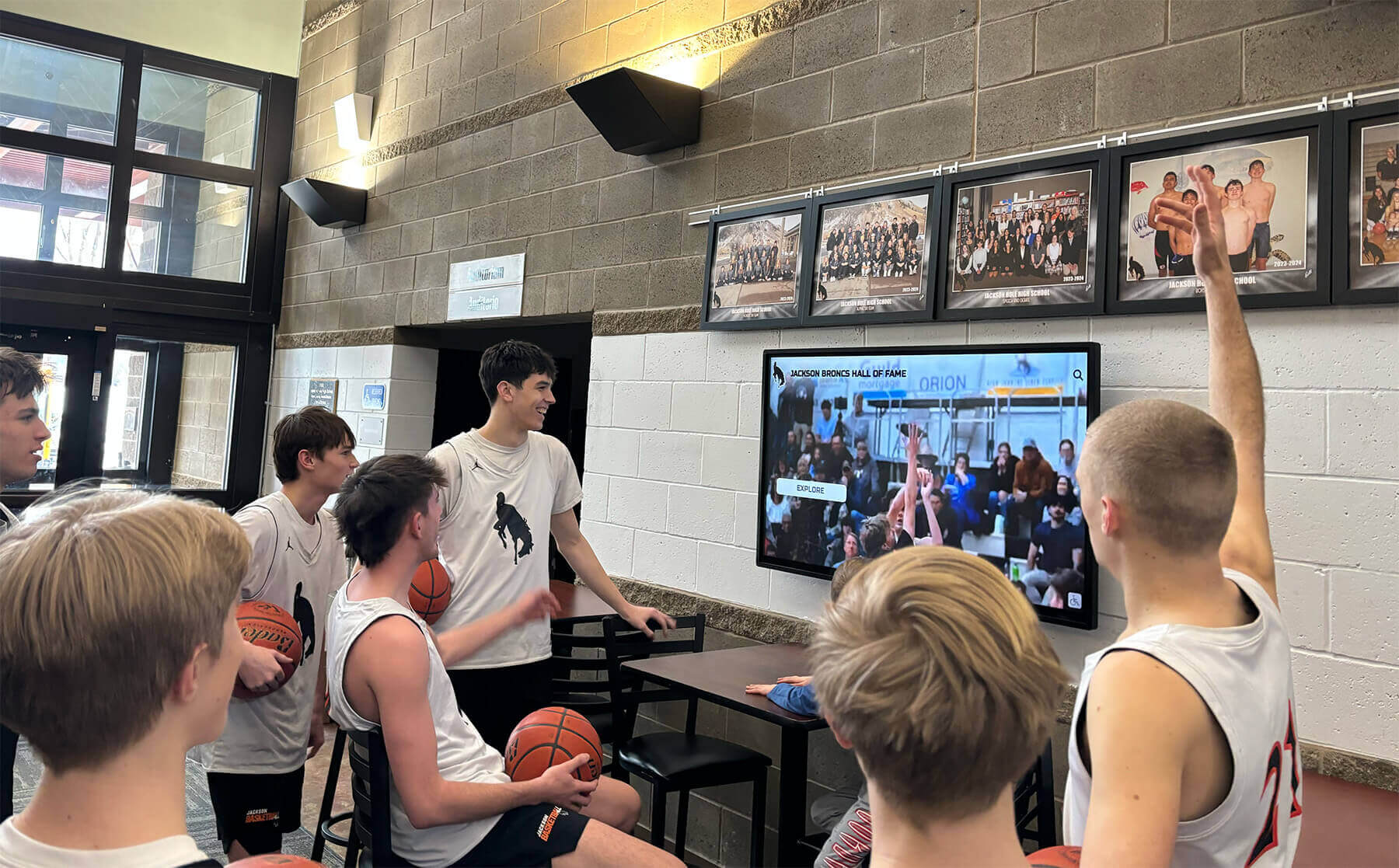Key Takeaways
Discover how high schools celebrate National Letter of Intent Day with virtual, interactive recognition boards that honor student-athletes signing to play college sports. Modern solutions for college commitment celebrations.
Understanding National Letter of Intent Day and Its Evolution
National Letter of Intent Day has undergone significant changes in recent years, making it essential for schools to understand current practices when planning recognition programs.
The Traditional National Letter of Intent System
For decades, the National Letter of Intent (NLI) served as the official document through which high school student-athletes committed to NCAA Division I and II programs. The NLI system created designated signing periods when student-athletes would formally sign binding commitments to their chosen colleges, generating major media attention and community celebration.
Traditional Signing Periods:
The early signing period in November primarily covered football and women’s basketball, creating a focused window for these high-profile sports. The regular signing period in February provided opportunities for most other sports and athletes who delayed their commitments. Throughout the year, rolling commitments occurred as athletes accepted walk-on opportunities or late scholarship offers.
These designated periods created natural focal points for recognition, with schools organizing signing day ceremonies that brought together student-athletes, families, coaches, and media to celebrate college commitments publicly.
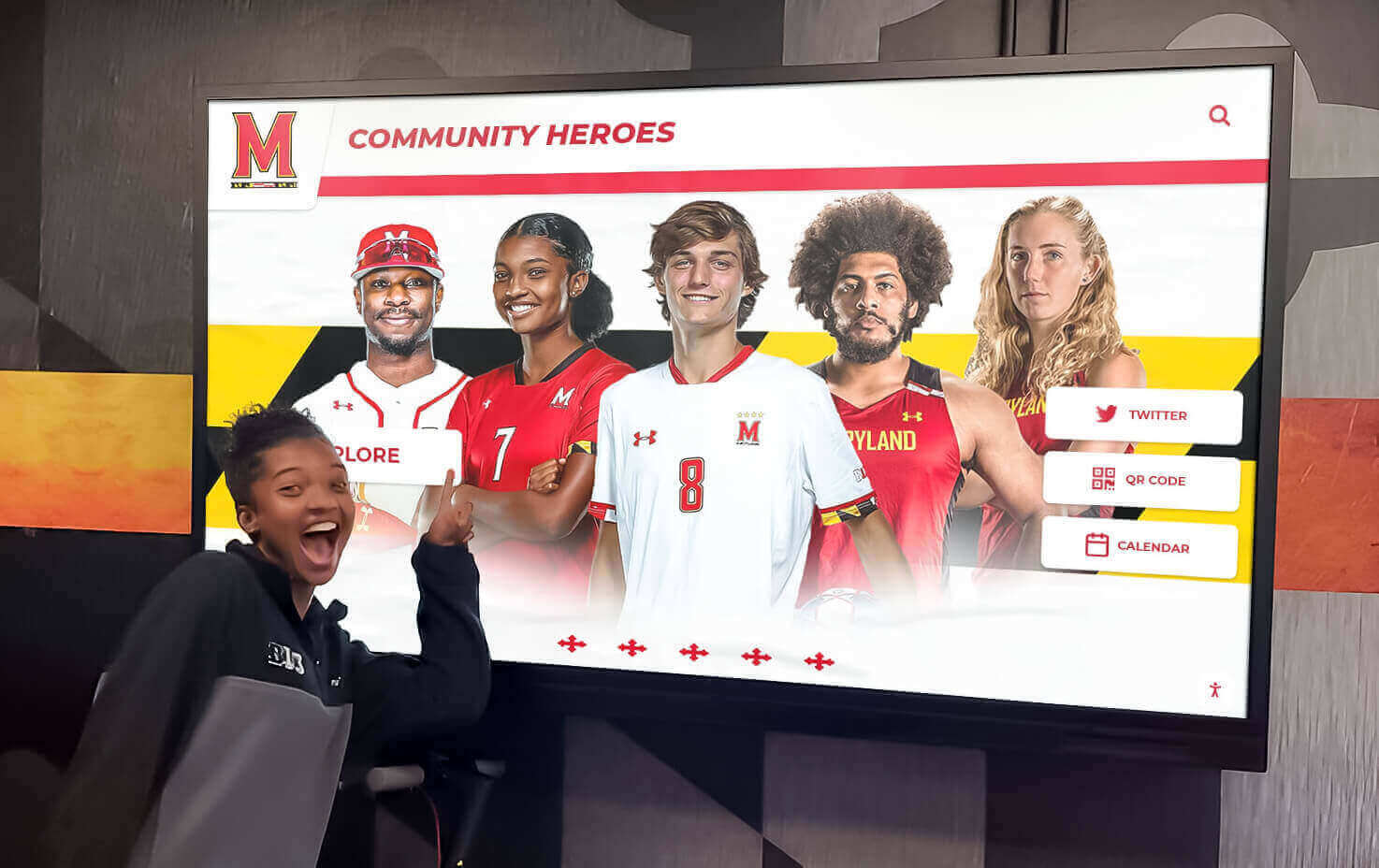
The 2024 Transformation: From NLI to Financial Aid Agreements
In October 2024, the NCAA Division I Council made a historic decision that fundamentally changed college athletic commitments. The traditional National Letter of Intent was eliminated and replaced with a new financial aid agreement system that provides similar functions while adapting to the evolving college athletics landscape.
Key Changes in the New System:
Under the updated framework, student-athletes committing to NCAA Division I programs now sign Athletic Aid Agreements provided directly by their chosen institutions. These agreements maintain the binding nature of commitments while streamlining the process. Division II programs continue using the National Letter of Intent system, creating a distinction between division levels that schools should understand when planning recognition programs.
The terminology shift from “National Letter of Intent” to “signing day” or “commitment day” reflects this evolution, though many schools and communities continue using familiar NLI language due to decades of tradition.
What This Means for High School Recognition Programs
Despite these changes at the collegiate level, the fundamental significance of commitment day remains unchanged for high school student-athletes and their communities. These milestones still represent extraordinary achievements worthy of comprehensive celebration, regardless of the specific document being signed.
Recognition Considerations:
High schools should focus on celebrating the commitment itself—the years of dedication, countless hours of training, and exceptional achievement required to earn college athletic opportunities. Whether students sign an Athletic Aid Agreement, a Division II National Letter of Intent, or accept a preferred walk-on position, each pathway to college athletics deserves meaningful recognition.
Modern virtual recognition boards excel in this environment by accommodating diverse commitment types and timelines, ensuring every student-athlete receives appropriate acknowledgment regardless of division level, signing period, or commitment structure.
The Power of Virtual and Interactive Recognition Boards
Traditional recognition approaches—bulletin boards, trophy cases, and static plaques—face significant limitations when celebrating the dynamic nature of college athletic commitments. Virtual and interactive recognition boards transform how schools honor National Letter of Intent Day and create lasting tributes to student-athlete achievements.
Advantages of Digital Recognition Technology
Modern digital recognition systems address virtually every limitation of traditional physical recognition approaches while providing capabilities impossible with conventional displays.
Unlimited Recognition Capacity
Digital platforms accommodate hundreds of athlete profiles spanning decades without physical space constraints. Schools can add unlimited commitments across multiple years and sports without removing historical recognition, creating comprehensive archives celebrating program traditions. As athletic programs grow and college placement increases, digital recognition displays scale effortlessly without requiring additional physical infrastructure.
Rich Multimedia Integration
Include photos, videos, statistics, and biographical information impossible with physical plaques or bulletin boards. Video commitment announcements, highlight reels, signing day footage, and interview content create emotional connections that static displays cannot match. Student-athletes sharing their journey through video testimonials provides inspiration for younger athletes while preserving memories for families and alumni.
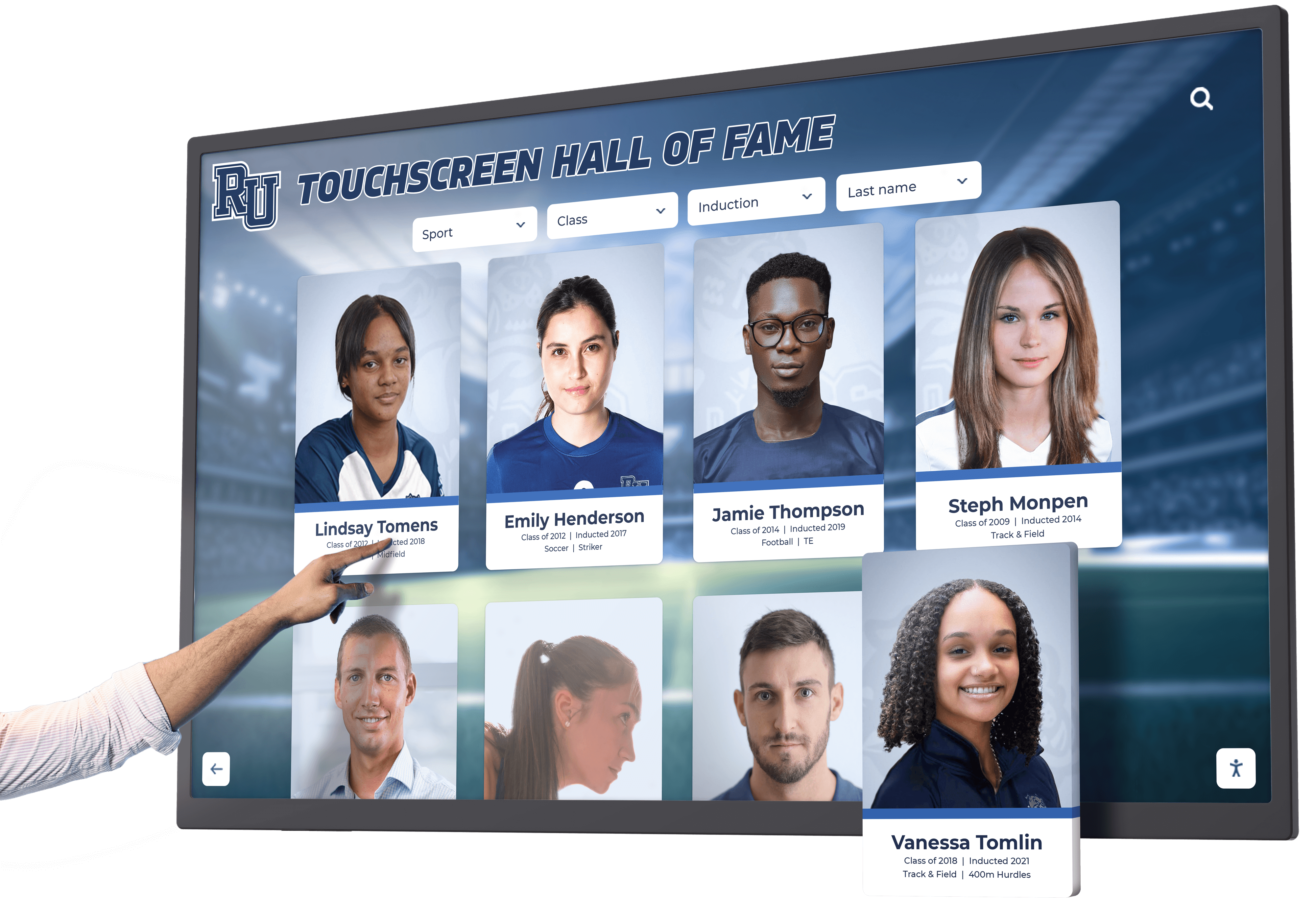
Real-Time Updates and Flexibility
Add new commitments immediately after announcements without waiting for plaque production or physical installation. Update existing profiles with college career achievements as alumni continue their athletic journeys. As commitment decisions occur throughout the year—from early signing periods through summer walk-on opportunities—digital systems ensure timely recognition that capitalizes on peak excitement.
Interactive Exploration and Engagement
Users can search by name, year, sport, college, or division level. Parents visiting for games instantly find their children’s profiles and discover related athletes, while prospective families explore your program’s college placement track record. Interactive touchscreen displays transform passive viewing into active engagement, dramatically increasing time spent with recognition content.
Extended Reach Beyond Physical Displays
Many digital recognition systems integrate with web-based platforms, extending recognition beyond physical display locations. Alumni worldwide can explore current commitments, recruits can access information remotely during their school evaluation process, and families share achievements across social media. This extended visibility amplifies the impact of National Letter of Intent Day celebrations far beyond your immediate school community.
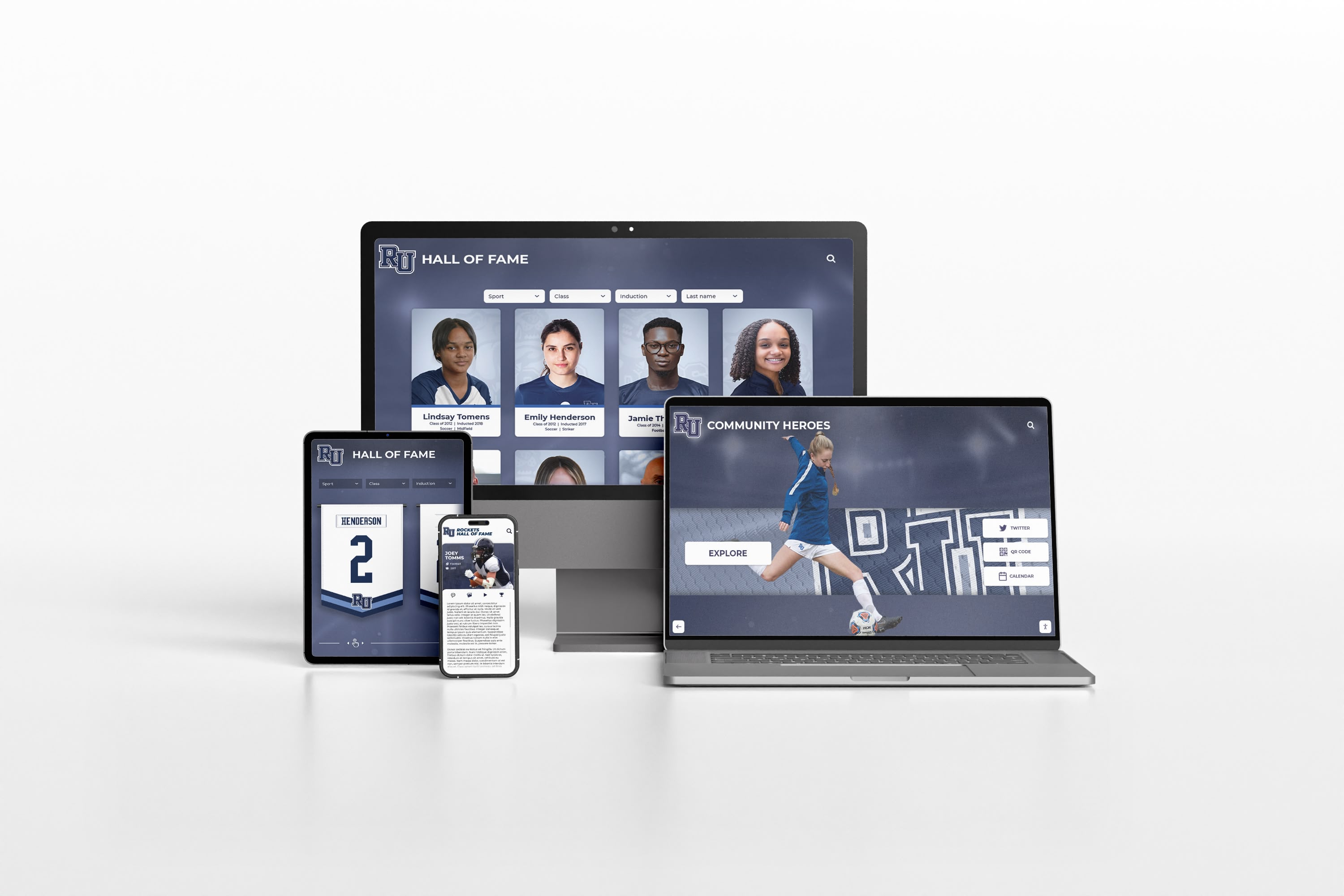
Creating Comprehensive Student-Athlete Profiles
The depth of information included in recognition displays significantly affects their impact and engagement. Comprehensive profiles tell complete stories rather than simply listing names and colleges.
Essential Profile Components:
Student-athlete identification should include full name and graduation year, high-quality photo showing the athlete in action or formal portrait, and sport(s) committed for at collegiate level. College information must feature university name and location, division level and athletic conference, and intended major or academic program when available.
High School Athletic Achievements:
Document the student-athlete’s high school career comprehensively. Include career statistics and performance highlights, team honors such as all-conference or all-state recognition, championship participation and team success, records set or significant milestones reached, leadership roles including team captaincies, and position(s) played throughout their career.
Academic Accomplishments:
Balanced recognition of academic and athletic excellence demonstrates your program’s commitment to complete student-athlete development. Feature grade point average and academic honors, National Honor Society or other academic organization membership, advanced placement or honors coursework completion, and academic awards specific to student-athletes.
The Journey and Impact:
Personal elements transform profiles from data collection to authentic storytelling. Consider including brief personal statements about why they chose their college, coach testimonials about the athlete’s impact on your program, messages about their work ethic or character, family background when appropriate and approved, and community service or leadership activities.
Solutions like Rocket Alumni Solutions specialize in educational recognition, offering purpose-built platforms designed specifically for school athletic recognition with templates, best practices, and support tailored to high school programs celebrating college commitments.
Strategic Approaches to Signing Day Recognition
Effective recognition of National Letter of Intent Day requires thoughtful planning around what information to showcase, when to update displays, and how to present commitments in ways that honor achievements while inspiring future generations.
Organizing Multi-Sport Recognition
High schools with athletes committing across multiple sports face unique organizational challenges requiring systematic approaches that ensure equitable representation.
Sport-Specific Organization Benefits:
Grouping commitments by sport helps athletes and visitors quickly find relevant information. Football players naturally seek football signing information first, making sport-based organization more intuitive than purely chronological presentation. This approach also highlights program strengths across your entire athletic department rather than allowing a few high-profile sports to dominate recognition.
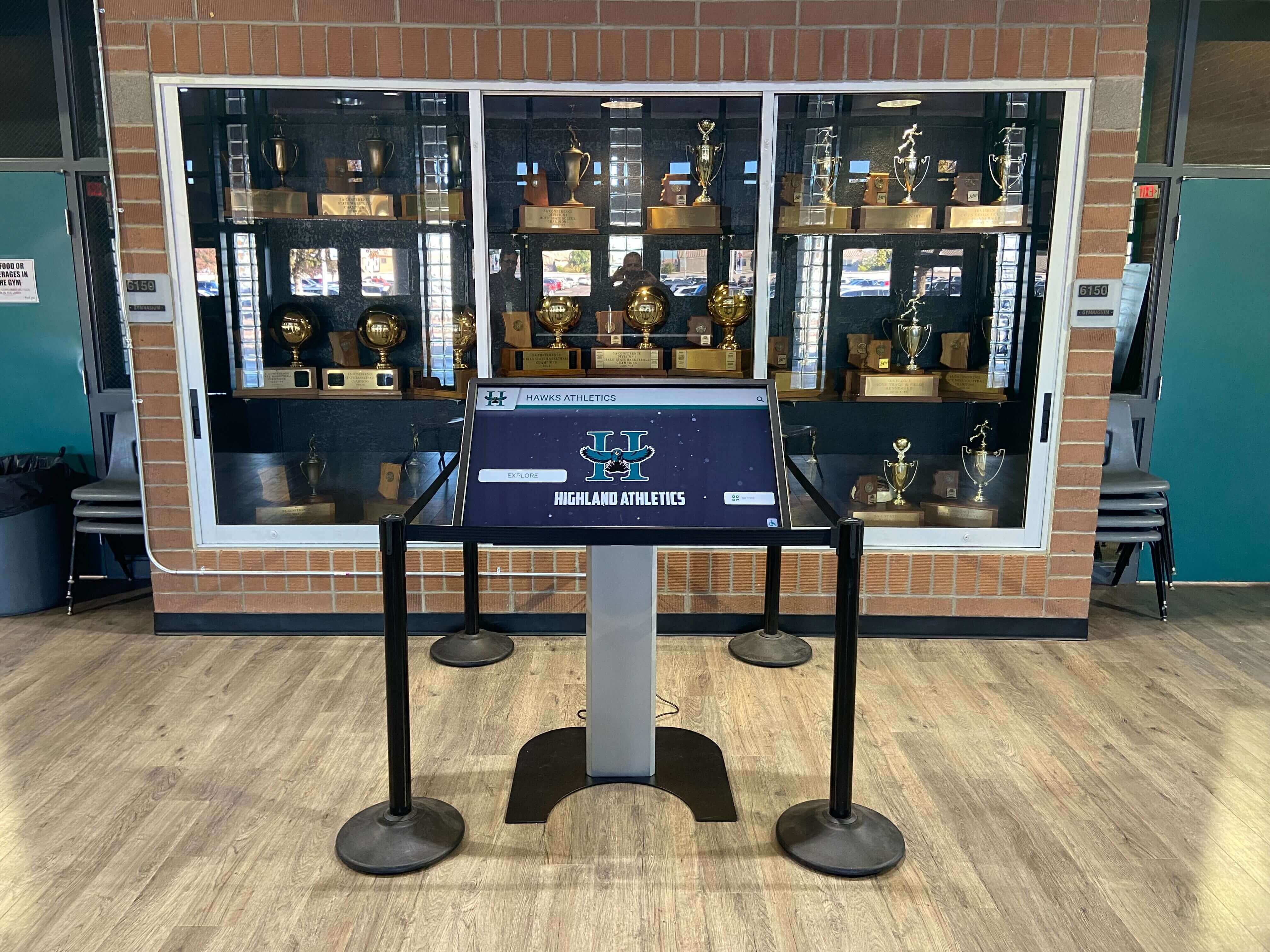
Flexible Categorization Options:
Digital recognition systems excel at multiple organizational schemes simultaneously. Display commitments by current year while maintaining searchable historical archives, organize by sport while enabling cross-sport browsing, group by college to highlight relationships with specific institutions, and filter by division level for comparison across competitive tiers. This flexibility ensures visitors can explore recognition content in ways most meaningful to them.
Ensuring Equal Visibility:
Maintain consistent profile quality across all athletes and sports, avoiding the common pitfall of over-emphasizing Division I commitments while minimizing Division III or NAIA signings. Every college commitment represents extraordinary achievement worthy of equal celebration. Feature all commits equally regardless of sport or division level, rotate highlighted athletes to ensure visibility across programs, celebrate achievement breadth demonstrating multi-dimensional program excellence, and include all competitive levels from Division I powerhouses to NAIA and Division III institutions.
Timing Recognition Updates Throughout the Year
College athletic commitments occur across multiple timeframes requiring different recognition approaches to ensure timely celebration when excitement peaks.
Early Signing Period Recognition (November):
The majority of commitments for football, basketball, and many other sports occur during the early November signing period. Programs should update recognition displays immediately following signing day ceremonies, capitalizing on peak excitement and community interest. Create special featured content highlighting all early period signings, coordinate school-wide celebration activities, and leverage media attention surrounding this high-profile period.
Regular Signing Period Recognition (February-April):
Spring sports, late-blooming recruits, and athletes who delayed decisions sign during the traditional February-April period. Provide equal celebration for these athletes through separate ceremony planning or integration with existing spring events. Update digital displays with each new commitment rather than waiting to batch multiple athletes, ensuring individual recognition receives appropriate attention.
Summer and Rolling Commitments:
Many commitments finalize throughout summer months as athletes accept walk-on opportunities, late scholarship offers materialize, or transfer situations resolve. Recognition systems must accommodate ongoing updates rather than limiting celebration to formal signing periods. Digital platforms enable instant recognition additions regardless of timing, ensuring no athlete’s achievement goes unacknowledged due to non-traditional commitment timelines.
Post-Graduation Updates:
As committed athletes graduate and enroll in college, displays should update to reflect “enrolled” status. First-year achievement updates—making rosters, earning playing time, receiving honors—demonstrate continued connection and program pride in alumni success. These ongoing updates extend National Letter of Intent Day recognition into multi-year celebration of your program’s impact on student-athlete development.
Recognition Beyond Division I: Celebrating All College Opportunities
A common pitfall in college commitment recognition involves disproportionately celebrating Division I signings while providing minimal acknowledgment to athletes continuing careers at other competitive levels. This approach sends problematic messages about what your program values and can discourage athletes pursuing excellent Division II, Division III, or NAIA opportunities.
The Reality of College Athletics:
According to NCAA research, fewer than 7% of high school athletes continue competing at any college level, making every college athletic opportunity an exceptional achievement. Division III institutions, while not offering athletic scholarships, maintain highly competitive programs that challenge athletes academically and athletically. NAIA schools provide outstanding education and athletics opportunities with scholarship possibilities. Division II programs offer balanced emphasis on athletics, academics, and community engagement with scholarship opportunities.
Comprehensive recognition celebrating all college commitments reinforces that multiple pathways to success exist and deserve equal celebration. This inclusive approach helps younger athletes understand that “playing in college” encompasses diverse excellent options rather than a single narrow path.
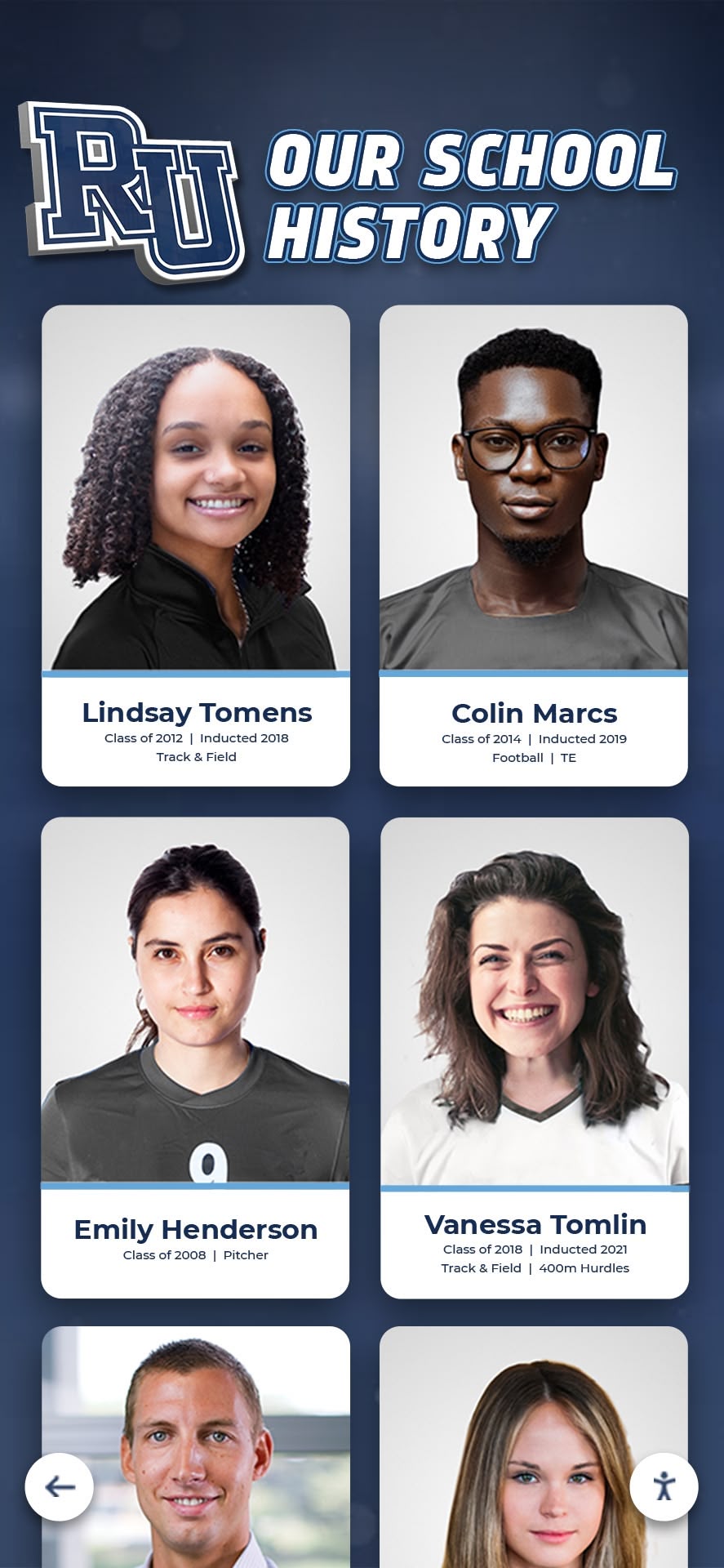
Implementing Virtual Recognition Boards: A Practical Guide
Schools ready to transform their National Letter of Intent Day recognition through virtual and interactive boards should follow systematic implementation approaches ensuring effective program launch and sustainable operations.
Selecting the Right Technology Platform
The technology platform you choose for commitment recognition significantly impacts ease of management, engagement quality, and long-term sustainability.
Essential Platform Capabilities:
Effective digital recognition systems should offer user-friendly content management accessible to non-technical athletic department staff, cloud-based operation enabling updates from any device anywhere, multimedia support including photos, videos, and interactive content, mobile responsiveness ensuring displays work on all screen sizes, and reliable customer support with training and ongoing assistance.
Hardware Considerations:
Digital recognition displays require appropriate hardware investments. Touchscreen displays typically range from 43 inches to 65+ inches depending on viewing distance and available space. Commercial-grade screens rated for continuous operation (16+ hours daily) withstand high school environment demands far better than consumer televisions. Wall mounting with security features prevents theft and vandalism while positioning displays at appropriate viewing heights.
Internet connectivity proves essential for cloud-based content management, requiring either wired Ethernet connections or robust WiFi networks. Location selection should prioritize high-traffic areas where students, families, and visitors naturally gather—athletic facility lobbies, main school entrances, cafeterias, and stadium concourses.
Software Platform Evaluation:
When evaluating software platforms for student achievement recognition, consider total cost of ownership including initial setup fees, annual licensing costs, content management ease for staff with varying technical abilities, template availability for standardized professional presentation, search and filtering capabilities for large commitment databases, and analytics providing engagement insights.
Rocket Alumni Solutions provides comprehensive platforms specifically designed for educational athletic recognition, combining powerful features with interfaces optimized for school staff rather than requiring dedicated IT support.
Content Development Strategies
Recognition program effectiveness depends on compelling, accurate content that engages audiences while honoring athletes authentically.
Photography Best Practices:
High-quality imagery proves essential for professional recognition displays. Capture multiple photo types including professional headshots with appropriate backgrounds, action shots during competition showing athletes performing their sport, signing day ceremony photos with families and coaches, and college materials and gear featured in commitment announcements.
Establish consistent photography standards requiring minimum resolution (1920 x 1080 pixels for digital displays), proper lighting and focus, and appropriate backgrounds that don’t distract from the athlete. Many schools coordinate with professional photographers during signing day ceremonies to ensure quality imagery for permanent recognition.
Writing Effective Profile Content:
Develop content guidelines ensuring positive, celebratory tone throughout all profiles, third-person perspective for consistency across athletes, standard profile length (300-500 words) providing substantive information without overwhelming readers, required information sections always included for completeness, and thorough proofreading for grammar, spelling, and accuracy.
Style guides enable multiple contributors to create content that feels unified and professional, maintaining quality standards as your commitment recognition program grows and evolves across years.
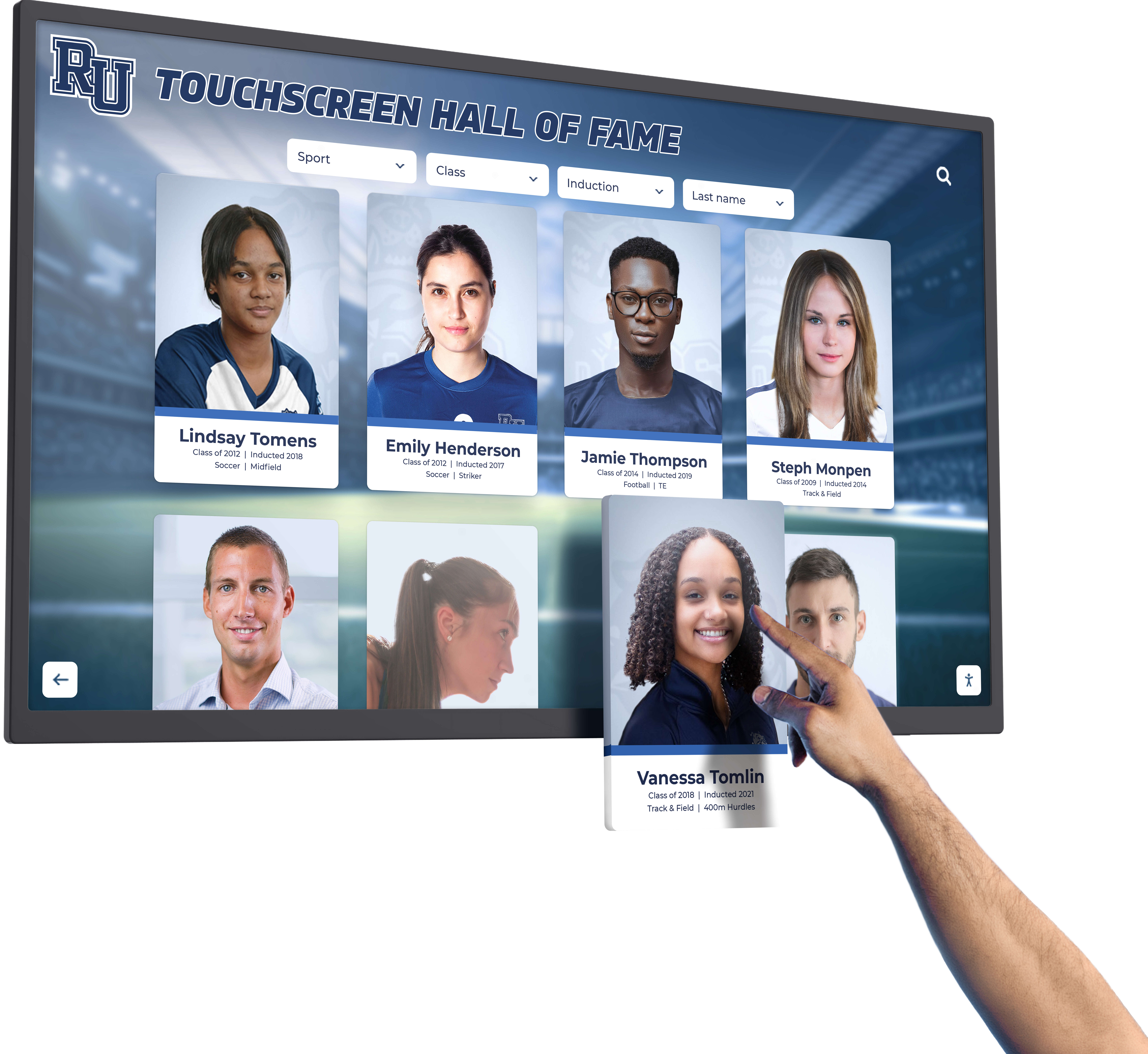
Gathering Information Systematically:
Create standardized information collection forms distributed when athletes commit, including requested information checklists covering all profile elements, photo and video submission portals with quality guidelines, parent permission forms for media use, and clear deadline expectations for information submission.
Assign clear responsibility including primary administrator (athletic director or coordinator) with ultimate responsibility for commitment recognition, sport-specific contacts with each coach submitting athlete information for their commits, content coordinator handling profile creation and updates, and media coordinator capturing photos, videos, and event coverage.
Organizing Memorable Signing Day Ceremonies
National Letter of Intent Day events provide crucial opportunities to celebrate commitments publicly while gathering content for ongoing recognition throughout the year and beyond.
Ceremony Planning Essentials:
Traditional fall signing day in November covers football and women’s basketball early signing period. Spring National Signing Day in February celebrates most other sports final signing period. Year-round individual or small group signings occur throughout the year as commitments happen. Each ceremony type deserves thoughtful planning and execution appropriate to the number of athletes and sports represented.
Ceremony Components:
Effective signing day events include designated signing tables with college pennants and gear creating visual focal points, family seating areas with photo opportunities, athletic director or principal remarks framing the significance of achievements, coach testimonials about each athlete highlighting their journey and impact, athlete speeches thanking supporters and explaining their choices, signing of official commitment documents captured on camera, professional photo sessions with multiple groupings, and receptions for attendees celebrating collectively.
Media and Content Capture:
Use signing day to gather rich content feeding digital recognition displays for years. Capture professional photos of each athlete signing commitment documents, group photos of all commits together by sport and collectively, video interviews asking standard questions about their journey and college choice, family celebration photos documenting support systems, messages from coaches and administrators about athlete impact, and high-resolution college logos and branding for display use.
This multimedia content creates recognition depth impossible to recreate later, providing lasting value as these moments become part of your school’s athletic history and tradition. Solutions enabling easy integration of signing day content into permanent displays maximize the return on ceremony investments.
Building Athletic Program Traditions Through Recognition
The most successful high school athletic programs cultivate rich traditions that create identity, inspire excellence, and connect generations of athletes and supporters. Strategic National Letter of Intent Day recognition serves as the foundation for tradition building.
Creating Signature Recognition Traditions
Distinctive recognition traditions become defining program characteristics that differentiate schools and create memorable experiences athletes cherish throughout their lives.
Historical Context and Legacy:
Connect current commitments to program history by maintaining comprehensive all-time commitment databases showing every college signing across decades. Highlight notable alumni who continued athletics at college level and achieved success in college or professional careers. Create decade retrospectives comparing program evolution and college placement trends over time. Feature family legacies when current athletes follow parents or siblings to same institutions.
These historical connections help current student-athletes understand they’re part of something larger than a single season, inspiring them to add their own chapters to ongoing legacy while honoring those who came before.
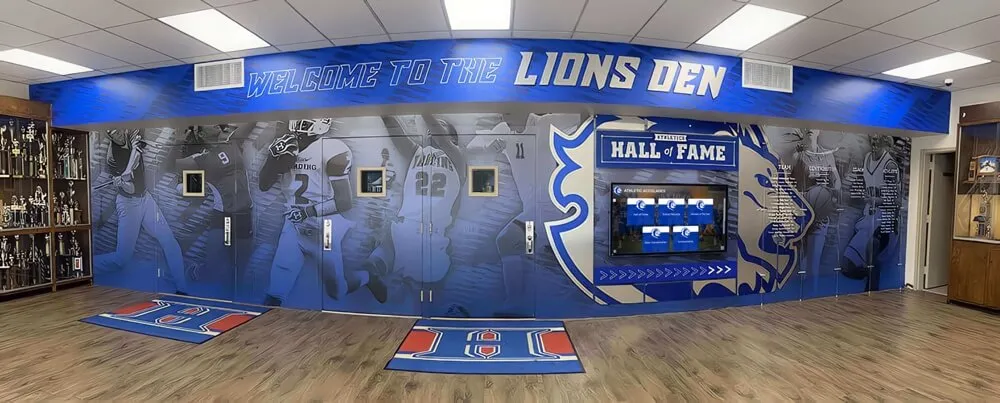
Annual Recognition Events:
Establish consistent annual traditions that students anticipate and families plan for. Host signing day breakfasts or luncheons bringing together all commits across sports for celebration before formal ceremonies. Create senior night recognitions honoring all senior athletes while providing special acknowledgment for those continuing athletic careers. Organize spring awards banquets integrating college commitment recognition with other athletic honors. Coordinate homecoming activities featuring recent commits during halftime introductions or special displays.
Visual Tradition Elements:
Develop distinctive visual elements unique to your program’s college commitment recognition. Create custom graphics templates incorporating school branding and colors, design special certificates or awards for college-bound athletes, produce commitment announcement graphics for social media following consistent format, and develop video intro sequences for commitment announcements at ceremonies or games.
Consistent visual identity makes your recognition immediately recognizable while building professional presentation quality that reflects well on your athletic program.
Inspiring Younger Athletes Through Visible Success
One of National Letter of Intent Day recognition’s most powerful benefits involves inspiring younger students by making collegiate athletics tangible and achievable rather than abstract and distant.
Pathway Visualization:
Comprehensive commitment displays provide visual proof showing which colleges recruit from your program, what achievements previous signings accomplished, and what paths successful athletes followed from freshman year through college signing. This self-directed exploration creates powerful motivation and helps athletes set realistic but ambitious goals for their own development.
When ninth graders see seniors signing with various colleges, collegiate athletics becomes a concrete pathway rather than a distant possibility. The progression from underclassman through upperclassman to college athlete creates clear developmental benchmarks younger students can pursue.
Feeder Program Connections:
Use commitment displays to strengthen relationships with youth leagues by highlighting athletes who played in local youth organizations, featuring progression pathways from youth through high school to college, and creating mentorship connections between current commits and youth athletes. Position displays where youth athletes participating in your facilities will encounter them, planting seeds for future participation and excellence.
Prospective Student Recruitment:
In areas with school choice or open enrollment, commitment recognition influences family decisions when evaluating high schools. Families assess athletic program college placement track records, diversity of colleges and competitive levels represented, coaching staff development success demonstrated through sustained placements, and overall program investment and quality visible through professional recognition.
Comprehensive digital displays provide this evidence at a glance, demonstrating program value more effectively than verbal claims during recruitment conversations. For schools focused on attracting talented athletes, visible recognition serves as powerful marketing demonstrating program credibility and college pipeline strength.
Measuring Recognition Program Impact
Athletic directors and administrators must demonstrate recognition program value to justify investment and optimize effectiveness. Comprehensive measurement examines multiple impact dimensions while maintaining focus on what matters most.
Quantitative Success Indicators
Track specific metrics connecting recognition programs to desired outcomes including year-over-year changes in student-athlete college placement rates, number of commitments across different sports and division levels, ratio of committed athletes to total senior class in each sport, recruitment visit frequency by college coaches, and participation rates in athletic programs showing increased interest.
Digital Engagement Metrics:
For schools using interactive digital recognition systems, track measurable engagement including daily interaction counts with commitment content, average session duration exploring athlete profiles, most-viewed athlete profiles revealing community interests, search queries showing what visitors seek, and peak usage times identifying optimal content update schedules.
These analytics reveal what content resonates most powerfully with audiences, informing future content development priorities and helping you understand which commitment stories create the greatest inspiration and engagement.
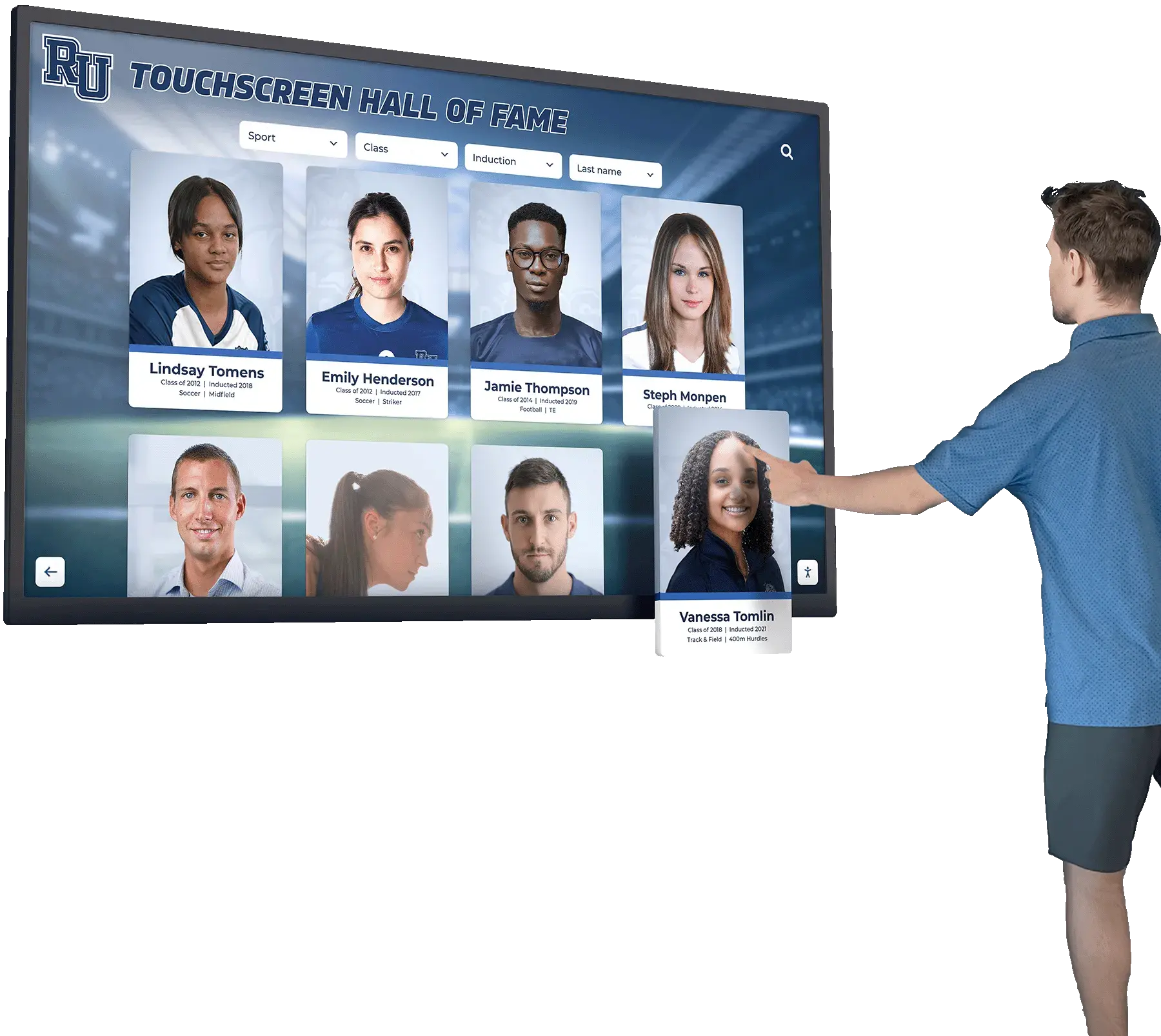
Qualitative Impact Assessment
Numbers tell partial stories. Qualitative research provides deeper understanding of how recognition programs influence program culture and individual athlete experiences.
Student-Athlete Perspectives:
Survey current and former athletes about recognition experience and impact. Gather feedback on profile accuracy and representation, assess motivation impact from seeing older athletes’ success, measure awareness of college athletic opportunities created by visible recognition, and request suggestions for recognition program improvement.
Family and Community Feedback:
Collect parent comments during signing day events about recognition satisfaction, survey families about how recognition influenced their student-athlete’s experience, request enhancement suggestions from community stakeholders, and measure pride levels with how your school celebrates these achievements.
College Coach Input:
Request feedback when college coaches visit facilities for recruiting or competitions. Ask if displays influence their perception of your program quality, gather suggestions from college athletics perspective, and assess professional presentation quality through their experienced eyes. College coaches prefer recruiting from programs with established track records—visible commitment recognition validates your college-preparatory reputation.
Comprehensive feedback across stakeholder groups provides balanced perspective on recognition effectiveness and reveals improvement opportunities you might otherwise miss.
Best Practices and Common Pitfalls
Understanding predictable obstacles helps schools implement recognition programs more successfully and maintain momentum over time while avoiding common mistakes that undermine effectiveness.
Privacy and Permission Protocols
Transparent policies and responsive management build trust while respecting individual preferences and legal requirements essential in today’s environment.
Student and Family Permissions:
Implement clear policies addressing media release forms during athletic program participation, specific permission for digital display publication, right to review content before publication, opt-out mechanisms for privacy-concerned families, and post-graduation policies for profile retention and ongoing updates.
Information Sensitivity Guidelines:
Generally safe to include in recognition displays: names, graduation years, and sports played; colleges committed to and division levels; athletic achievements, statistics, and awards; academic honors and accomplishments; public scholarship information when already announced; and career aspirations and intended majors with student permission.
Typically avoid including without explicit permission: specific scholarship dollar amounts unless publicly disclosed, detailed financial aid information, home addresses or personal contact information, medical history or injury details, and sensitive family circumstances.
Conservative approaches to sensitive information prevent complications while still enabling comprehensive, meaningful recognition that celebrates achievements appropriately.
Maintaining Content Accuracy and Currency
Recognition program credibility depends on accurate, current information presented professionally and maintained consistently.
Quality Control Processes:
Establish verification steps confirming commitment authenticity before public display, review for spelling, grammar, and factual accuracy, check college name spelling and logo usage, verify athletic and academic information with coaches and counselors, and obtain final approval from athletic director before publication.
Update Schedules:
Create systematic update processes including immediate additions when new commitments occur, seasonal reviews updating athlete status (enrolled, competing, etc.), annual comprehensive audits ensuring all information remains current, and ongoing enhancements adding college career achievements as alumni progress.
Programs implementing clear quality control and update schedules maintain professional credibility while ensuring recognition displays remain valuable resources rather than outdated artifacts. Modern content management approaches make these processes efficient and sustainable even for schools with limited athletic department staff.
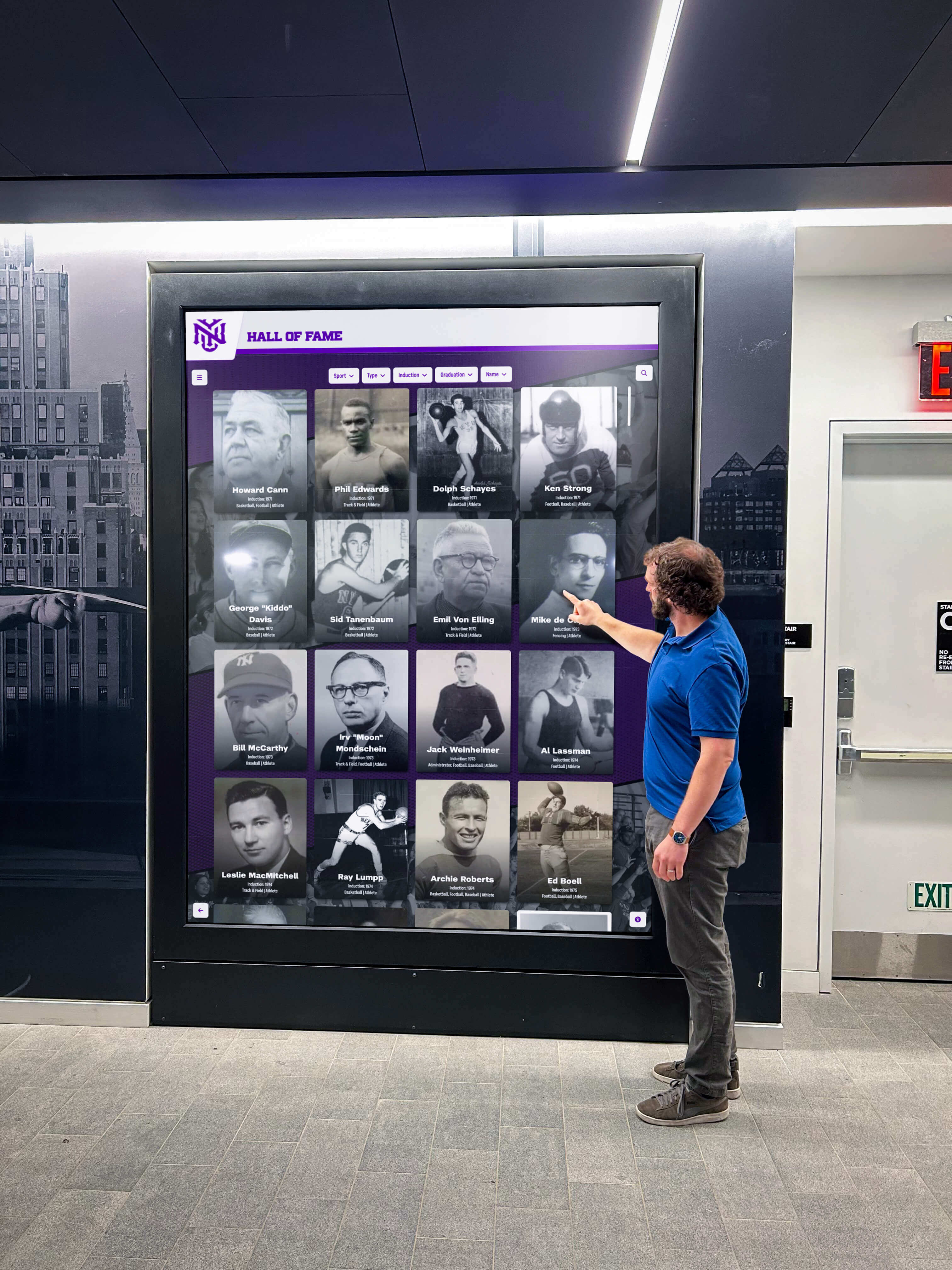
Balancing Traditional and Modern Recognition
Many schools wonder whether digital recognition should replace traditional approaches or complement them. The most effective strategies typically combine both, leveraging each approach’s strengths.
Hybrid Recognition Strategies:
Maintain traditional signing day ceremonies and celebrations honoring the personal, community-building aspects of these events. Use physical displays in prominent locations with QR codes linking to detailed digital profiles for visitors wanting deeper exploration. Provide traditional certificates and awards to student-athletes as tangible recognition items they can keep. Implement comprehensive digital systems as permanent archives accessible to broader audiences across time and distance.
This layered approach honors tradition while maximizing engagement through modern technology, ensuring all stakeholders—from current students to distant alumni—can celebrate your program’s college placement success in ways most meaningful to them.
Conclusion: Celebrating Achievement, Building Excellence
National Letter of Intent Day and college commitment celebrations represent extraordinary opportunities to honor student-athlete achievements, inspire younger athletes, demonstrate program quality, and build traditions that strengthen high school athletics for generations.
For high schools looking to maximize the impact of these moments, virtual and interactive recognition boards provide transformational capabilities that traditional approaches cannot match. Unlimited capacity, rich multimedia storytelling, real-time updates, interactive exploration, extended reach, and sustainable management make comprehensive recognition practical for schools of all sizes while creating engagement that resonates with digital-native students and tech-savvy families.
Successful commitment recognition programs combine thoughtful planning, comprehensive information gathering, engaging content creation, and sustainable management practices. Whether implementing traditional approaches, modern digital systems, or hybrid strategies, the key lies in creating recognition that authentically celebrates achievement while inspiring continued excellence across your athletic programs.
As you develop or enhance your National Letter of Intent Day recognition strategy, remember that you’re not simply displaying names and college logos—you’re telling stories of dedication, persistence, and achievement. You’re showing younger athletes that their dreams are attainable. You’re building program reputation that attracts future talent. Most importantly, you’re honoring the remarkable accomplishments of student-athletes who represent the best of what high school athletics can develop.
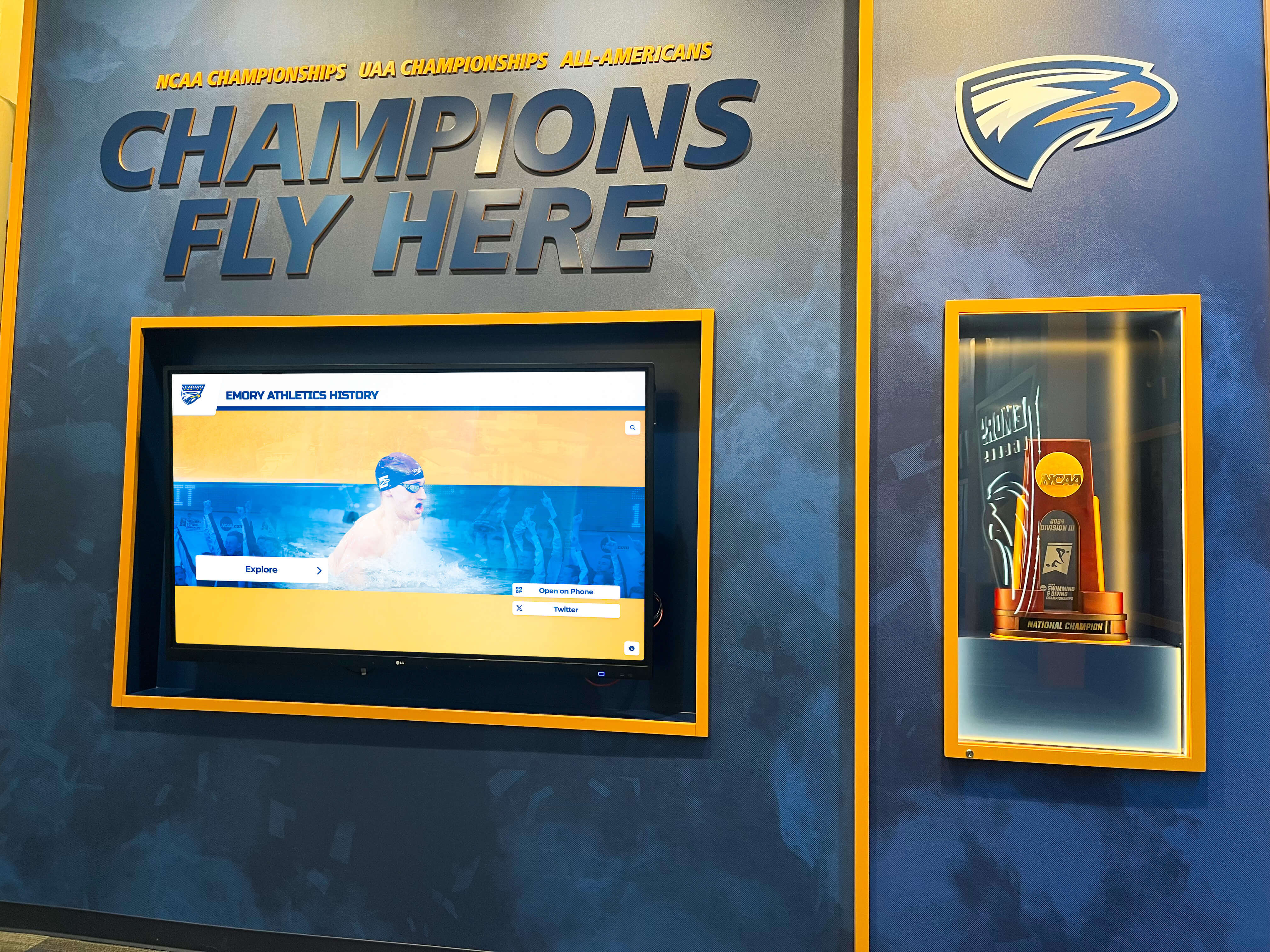
Ready to Transform Your National Letter of Intent Day Recognition?
Explore how Rocket Alumni Solutions can help you create interactive displays that celebrate college commitments, inspire future student-athletes, and build lasting athletic program traditions. Our comprehensive digital recognition solutions are designed specifically for high schools and athletic programs, offering the technology, templates, support, and expertise you need to honor your student-athletes properly.
Visit Rocket Alumni Solutions to discover how virtual recognition boards transform signing celebrations from temporary events into permanent sources of inspiration and pride.
Contact us today to schedule a demonstration and discover how the right display solution can amplify your athletic program’s success while inspiring the next generation of college-bound student-athletes.
